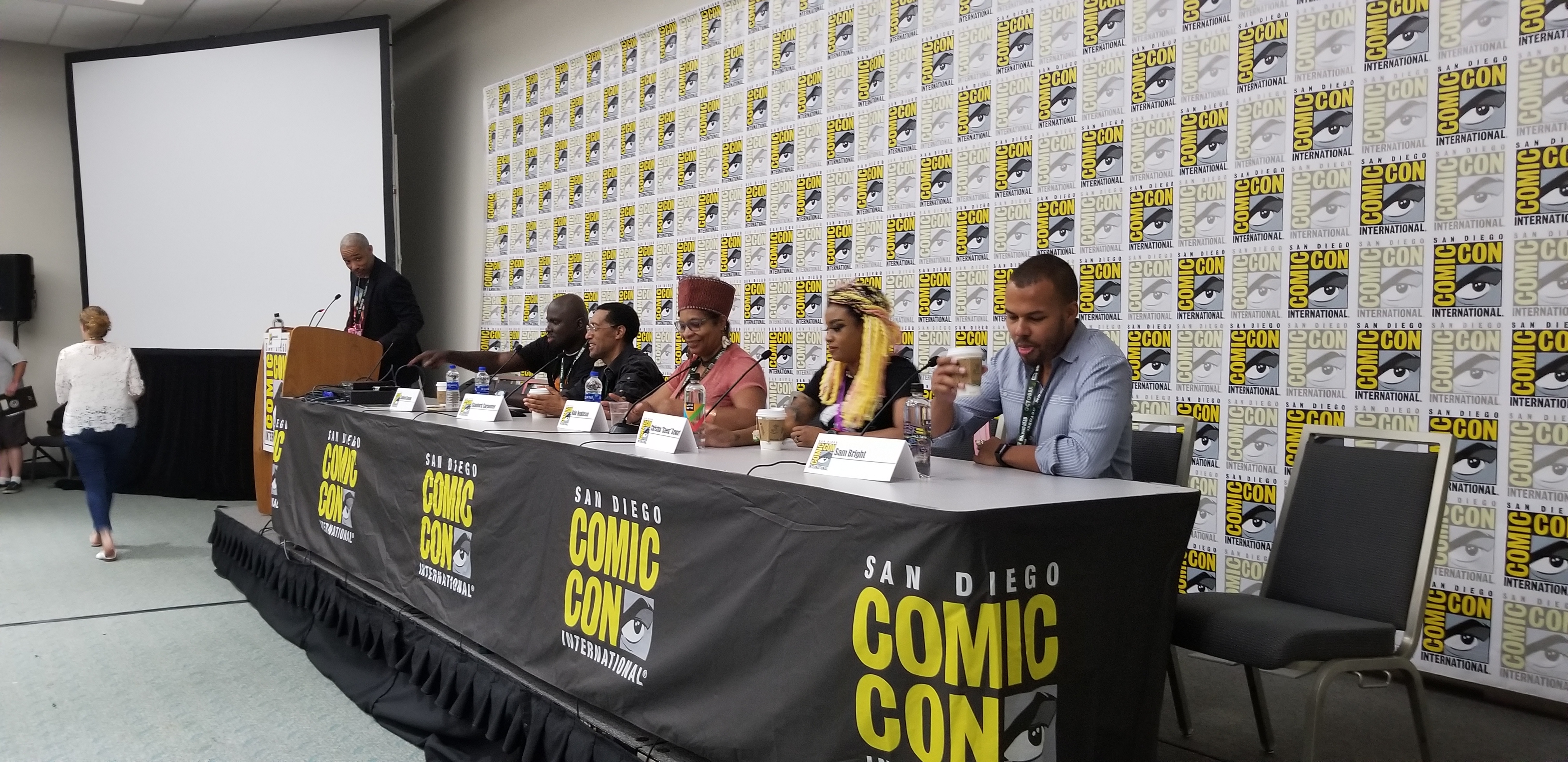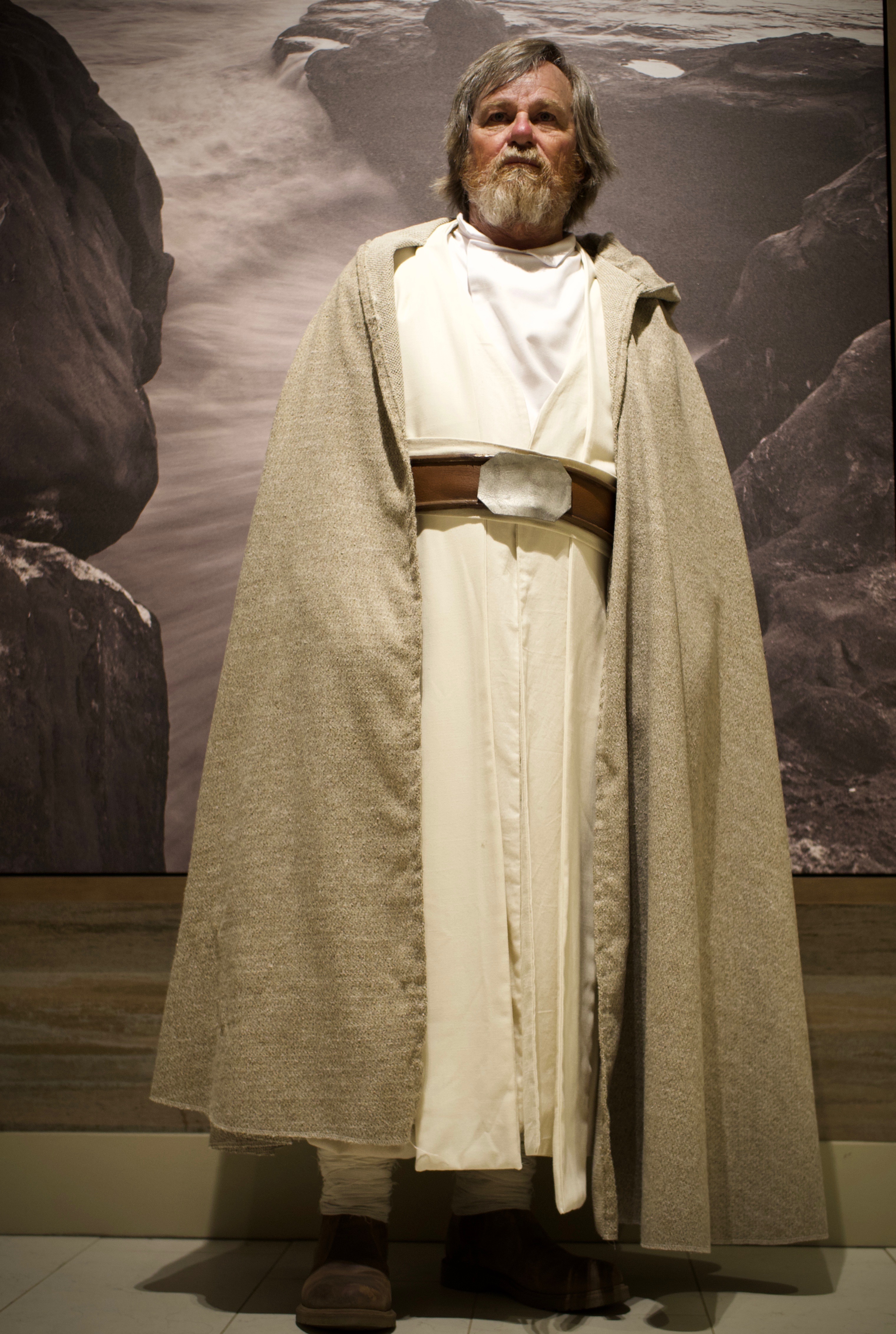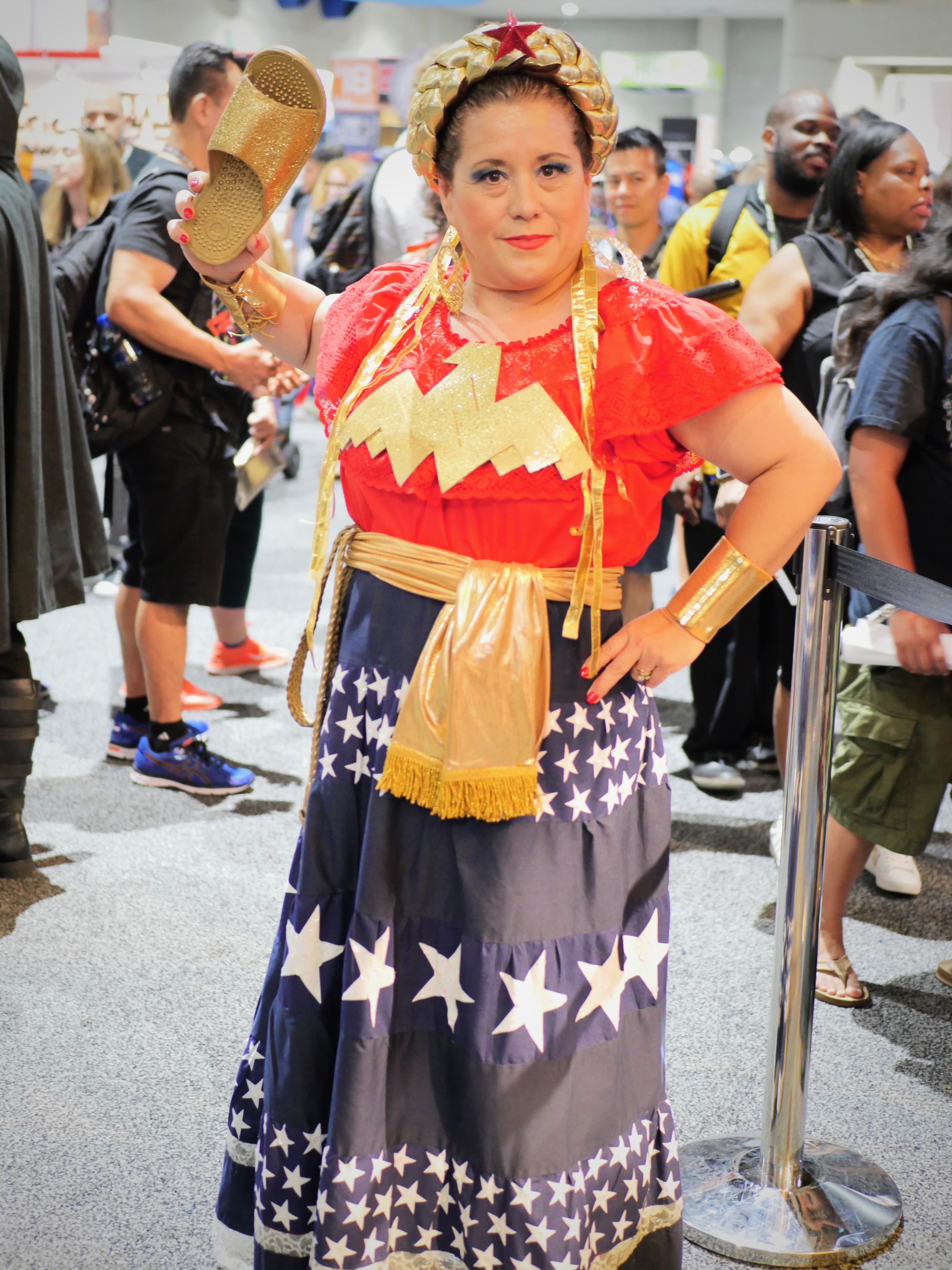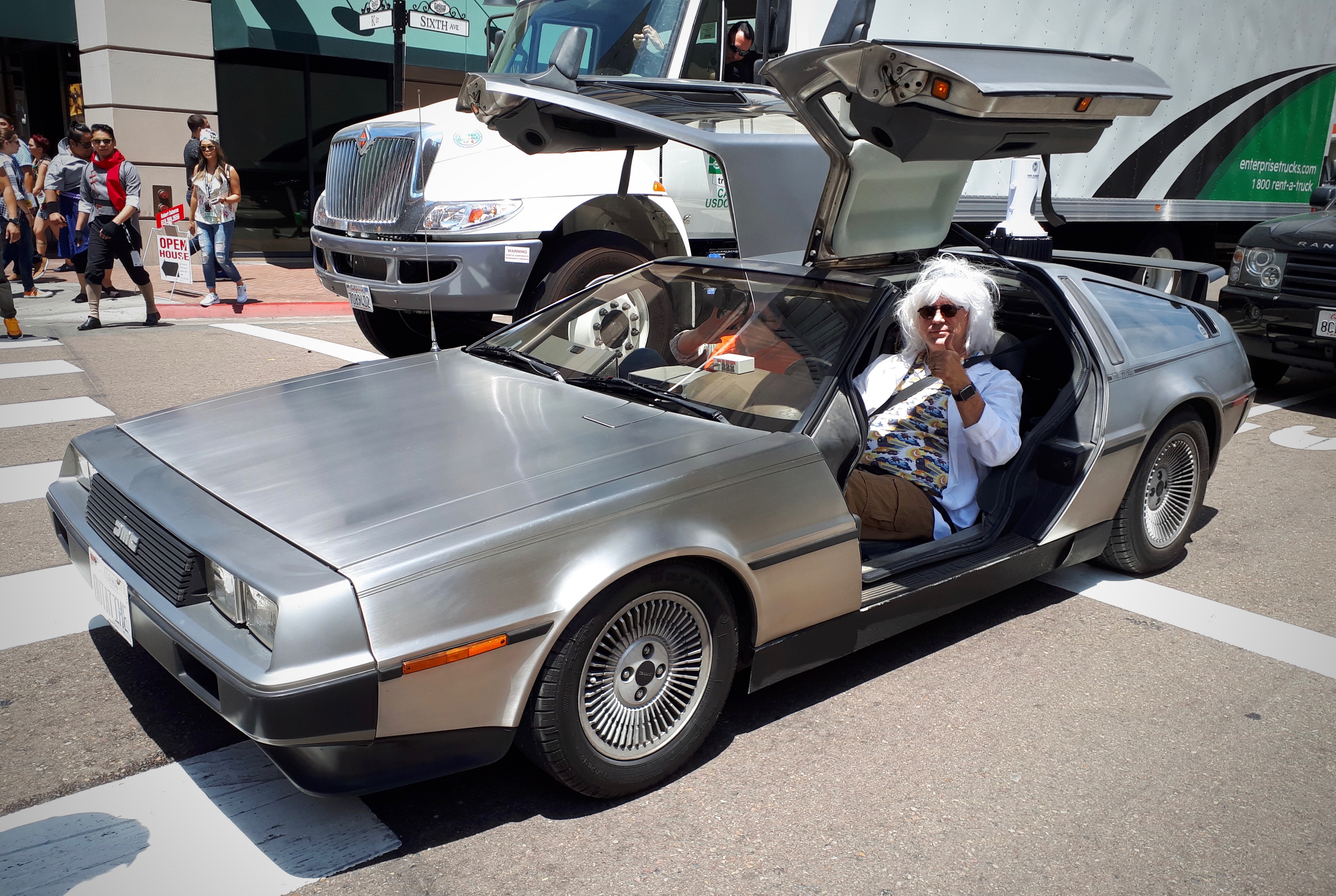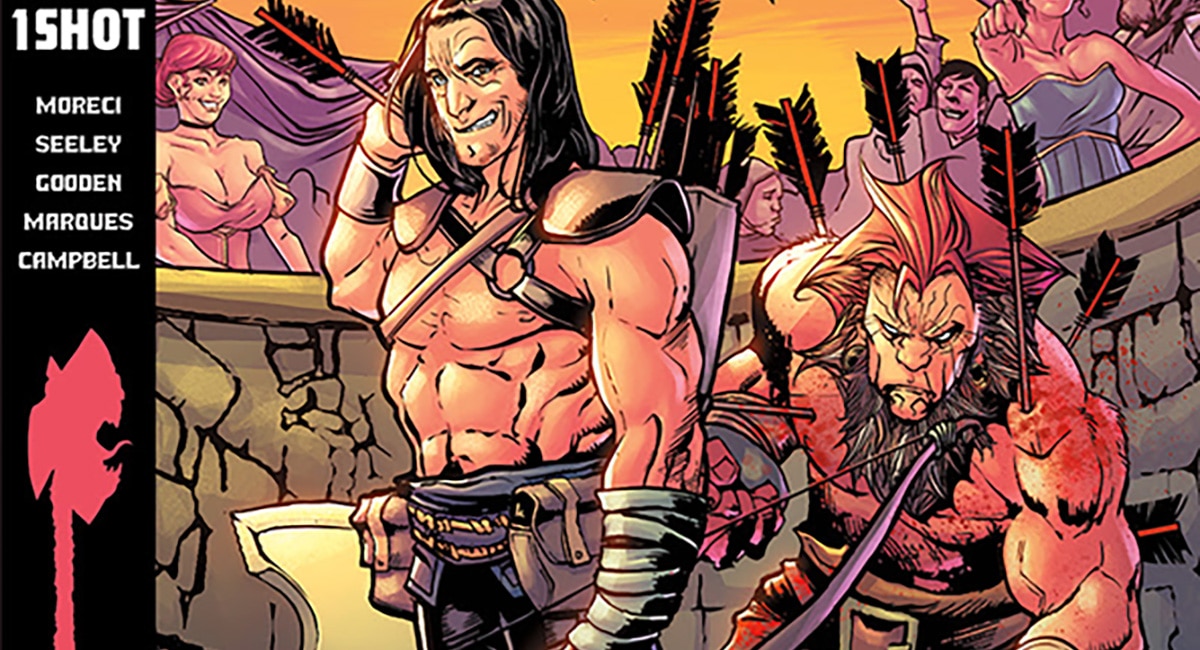By Jessica Dunlap
At the start of the Diversity and Comics panel, moderator Aaron Grizzell, the Executive Director for the Northern California Dr. Martin Luther King Jr. Community Foundation, expressed his hope that the round-table-style discussion would solve every diversity problem. It prompted laughs from the audience, but the talk that followed (with panelists Sanford Greene, Standford Carpenter, Nalo Hopkinson, Christina “Steenz” Stewart, and Sam Bright) also left the audience asking questions and seeking ways to incorporate diversity in the comics community.
Grizzell began by asking the panelists to name the character with whom they most identified (either growing up or currently) and how that character made an impact on them in terms of how they saw themselves. For Greene, that was Luke Cage (a character whose comic he would later be the artist on), because when he was growing up, he was the first character of color he saw on the cover of a comic. Carpenter, an ethnologist, anthropologist, and archeologist, as well as the Program Director for the Black and Brown Comics Festival, chose Nightcrawler and Cyclops, both of whom he felt reflected his feelings about not fitting in in his neighborhood and being viewed as a threat. Hopkins, a professor of Creative Writing as well as a writer on Sandman Universe, liked the youth and vulnerability of Spider-Man, but identified with Daredevil for what she later realized were troubling reasons: “I had convinced myself that when he put on the suit he was a person of color…partly because – and here’s the problem – he was very athletic and he was seen as a troublemaker. And when I grew up and realized that’s what had been put on me, I’m still a little bit pissed off about that, but it’s not Daredevil’s fault.” Stewart, an editor at Lion Forge, said she didn’t see herself in a comic book character until Kamala Khan, the current Ms. Marvel, whom she calls the most relatable comic book character right now. Bright, Vice President of soft goods at eBay, identified with Cyborg’s ability to absorb technology and have a dual identity. He also chose Spawn for proving that African-American characters could have traction and sell merchandise.
One of the more interesting discussions occurred when Grizzell asked the panelists how the success of Black Panther and Wonder Woman translates to sales. Bright cited the fact that customers were using their money to show they want more diverse stories and that stores were able to use more platforms to get them into the hands of new customers. Stewart, a former comic shop manager, pointed out that it doesn’t work the same at local comic stores, where casual or new fans could be put off by an overwhelming number of titles for a particular character or by good books that get cancelled before they have an opportunity to find and build a strong fan base. She argued that publishers need to look to all three markets (direct to comic shops, book stores, and library/educators) to get more kinds of people interested in reading and buying comics.



